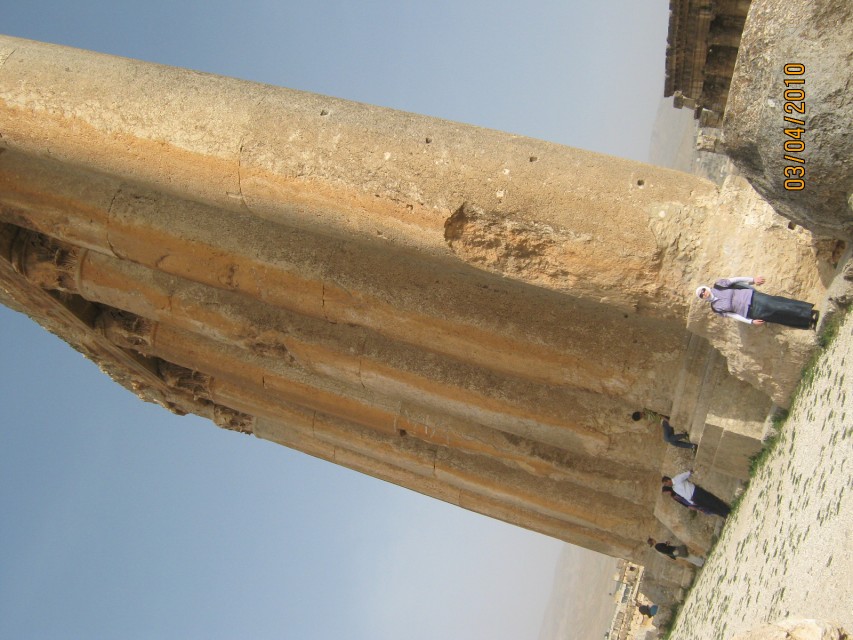Visiting Baalbek temple ruins was very exciting. It was like I got a time machine and went back in time to the era of the Romans and Phoenicians. Known as Heliopolis (City of the Sun), the Phoenician city preserved its religious idiosyncrasy throughout the Roman times. Having a brief look at the history of Baalbek, the city was a place of worship to Baal (known as the Phoenician Sun God) in Phoenician times. During the Hellenistic period the Greeks named the city Heliopolis and it entered its golden age in 47 B.C., when Julius Caesar made it a Roman colony. In the temple of Bacchus, I started imagining how sacrifices were made to the Roman god of wine ,Bacchus (Dionysus).
Although Baalbek is a great cultural heritage to Lebanon and a significant touristic place, the thing that distracted me the most was that it didn’t look like a touristic place. I mean the region surrounding Baalbek ruins needs lots of renovations and governmental services. The streets leading towards the ruins were bumpy and narrow and didn’t indicate that this place was a touristic one. They were in dire conditions and trash was significantly present. I enjoyed the city with the crowdedness and the vividness of the old marketplace that still resembles part of the past; however, it is really isolated from aspects of modernity.
The second thing that is terrifying me the most is that Lebanon is expecting an earthquake and along with the humanitarian losses, cultural sites are under the threat of demolition. After the last war on Lebanon in 2006 experts sent to Lebanon by UNESCO to assess the state of the country’s cultural heritage sites found out that the site of Baalbek, inscribed on UNESCO’s World Heritage List, was affected by the bombs where they reported that that cracks on the lintels of the temples of Jupiter and Bacchus at the site had probably widened because of vibrations from bombings nearby and warranted close monitoring. Although not much affected, the one block of stone has fallen down.
I hope that the government start funding projects dedicated for preserving these cultural heritage sites not only for attracting tourists but also because they resemble the cradle of ancient civilizations and the past eras that have had an impact on what we are today.





